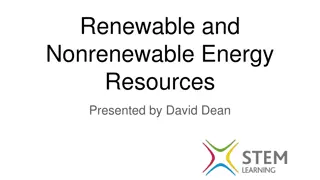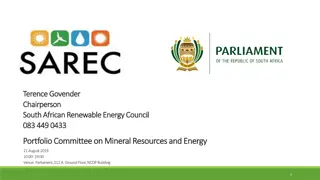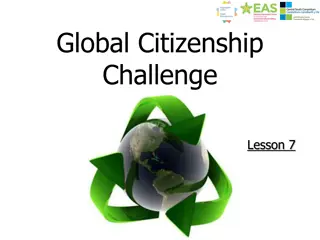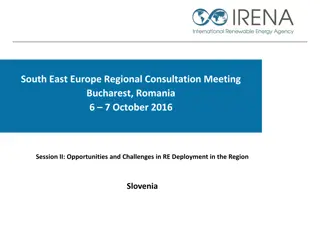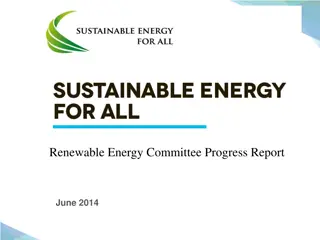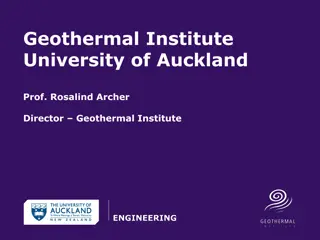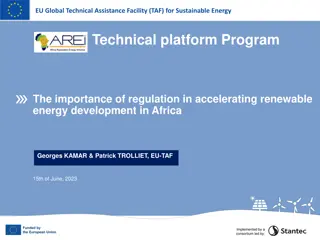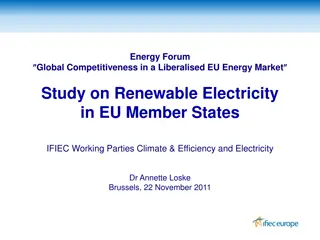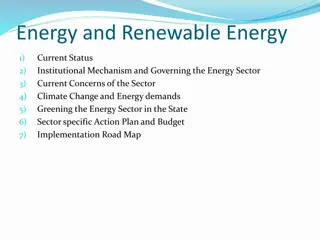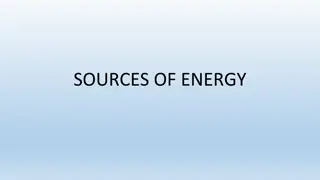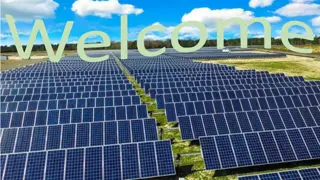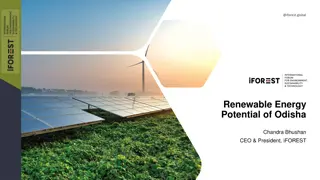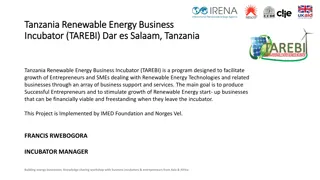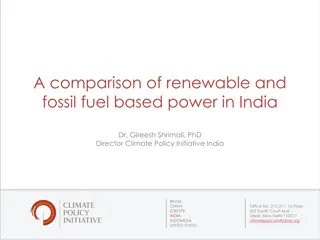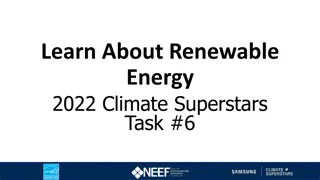Exploring Renewable Energy Sources
Renewable energy is derived from constantly replenished sources such as solar power, wind power, biomass, hydroelectricity, and geothermal energy. These sustainable sources offer clean alternatives to traditional fossil fuels, contributing to a greener future. Solar energy utilizes the sun's power through passive and active heating methods, while wind power converts wind movement into electricity. Biomass involves using organic matter for energy production, and hydroelectricity harnesses the flow of water to generate power. Geothermal energy utilizes heat from the Earth's crust for electricity generation and heating/cooling systems. Embracing renewable energy can help mitigate climate change and reduce environmental impact.
Download Presentation

Please find below an Image/Link to download the presentation.
The content on the website is provided AS IS for your information and personal use only. It may not be sold, licensed, or shared on other websites without obtaining consent from the author. Download presentation by click this link. If you encounter any issues during the download, it is possible that the publisher has removed the file from their server.
E N D
Presentation Transcript
RENEWABLE ENERGY Energy from sources that are constantly being formed
Solar Energy Power from the sun Produced by nuclear fusion reactions in the sun s core Passive Solar Heating: Uses the sun s energy to heat something directly Oriented according to the yearly movement of the sun Active Solar Heating: Energy from the sun is gathered by collectors & used to heat water or to heat a building Photovoltaic Cells: Convert the sun s energy into electricity Energy is stored in batteries which supply electricity when the sun is not shining
Wind Power Converts the movement of wind into electrical energy Fastest growing energy source in the world Cost has declined Problem with transporting electricity
Biomass Using plant material, manure & any other organic matter as an energy source Methane Produced when bacteria decompose organic wastes Can be burned to generate heat or electricity Alcohol Produced by fermenting fruit or agricultural waste (ex: ethanol from corn)
Hydroelectricity Produced from the flow of moving water 20% of the world s electricity Water in a reservoir is released to turn a turbine, which generates electricity Expensive to build, relatively inexpensive to operate Doesn t contribute to acid rain Dams last longer than most fossil fuel power plants do Changes a river s flow & can disrupt ecosystems
Geothermal The energy from heat in the Earth s crust Power plants pump heated water or steam from rock formations and use the water or steam to power a turbine that generates electricity Water must be managed carefully so it is not depleted Geothermal heat pumps can be used to both heat & cool homes
Section 18-2 ALTERNATIVE ENERGY AND CONSERVATION
Alternative Energy Energy sources that are still in development 2 conditions that must be met for an alternative energy source to become a viable option for the future: Cost effective Environmental effects must be acceptable
Alternative Energy Technologies Tidal power Ocean thermal energy conversion Hydrogen
Energy Efficiency The percentage of energy put into a system that does useful work More than 40 % of all commercial energy used in the U.S. is wasted. Most of it is lost from inefficient fuel-wasting vehicles, furnaces, and appliances and from leaky, poorly insulated buildings.
Conservation Around the Home Energy conservation: saving energy








